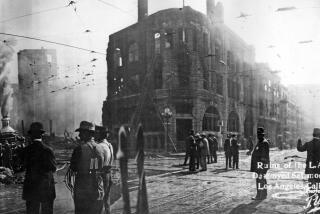Crash Adds New Focus to Airliner Bomb Plot Trial
- Share via
NEW YORK — The possibility that a bomb may have caused 230 people to perish aboard TWA Flight 800 has brought new focus to the trial of Ramzi Ahmed Yousef, who is charged with plotting to blow up a dozen U.S. airliners in 1995 during a day of mass terror.
In a sparsely attended federal courtroom in Manhattan, prosecutors have presented a chilling scenario of how Yousef allegedly foiled airport security overseas by passing through checkpoints with bomb materials, which he then assembled aboard a Philippine airliner on Dec. 11, 1994.
Yousef is believed to have gotten off the plane before the bomb, which he allegedly placed in a life vest beneath the seat of a Japanese businessman, exploded. Prosecutors say it was a test run for the bigger plot.
Only when a fire broke out in a Manila apartment where explosive ingredients were being mixed was the plan thwarted, prosecutors contend.
Soon after the flames were extinguished, Reynaldo Canlas, a computer expert serving as a technical consultant to the Philippine National Police intelligence command, received a phone call.
Col. Robert Delfin, the intelligence command’s deputy director for operations, said he had an “urgent assignment.” An hour later, he arrived at Canlas’ home with a black bag containing a Toshiba laptop computer and accessories, including an interface allowing the modem to be connected to a cellular phone.
“Immediately after he left . . . I turned on the computer, powered it up and I started browsing the contents of the disk drive,” Canlas testified.
As the expert sifted through the contents of the computer that prosecutors contend was owned by Yousef, the importance of what Canlas was seeing became clear.
Files included a draft of a threatening letter, airline schedules followed by what authorities believe was the planned bomb detonation time aboard each plane, telephone numbers, photos for identification cards and fax messages pertaining to a transfer of about $70,000 from a Philippine bank.
Canlas told the jury that he saw the word “Bojinka” in the files. According to prosecutors, Bojinka was the code name for the complex plot to bomb the airliners to weaken U.S. support for Israel.
The computer data has been some of the most compelling testimony so far against Yousef, 28, and two co-defendants. Yousef also faces a separate trial for his alleged role as mastermind of the February 1993 bombing of New York’s World Trade Center.
At the beginning of the trial, Yousef startled the court when he insisted on acting as his own lawyer. An engineer by training, he has displayed a methodical mind in his questioning of witnesses. But to the dismay of lawyers for his co-defendants, Abdul Hakim Murad and Wali Khan Amin Shah, he has let slip opportunities to attack testimony.
With coaching from his former attorney, Roy R. Kulcsar, who sits next to him and has been permitted to act as an advisor, Yousef has scored some points.
*
An important government witness, Philippine police inspector Orlando Ramilo, admitted that higher ranking officers ordered him not to tell the truth in a report about where a briefcase containing bomb-making materials was found.
The inspector testified he was told to say the briefcase was found in a hall outside the apartment, apparently because a search warrant for the apartment had not been obtained.
The pace of the trial has been slowed by Yousef frequently seeking advice from Kulcsar, and the government is now not expected to wind up its case at least until mid-August.
More to Read
Sign up for Essential California
The most important California stories and recommendations in your inbox every morning.
You may occasionally receive promotional content from the Los Angeles Times.













